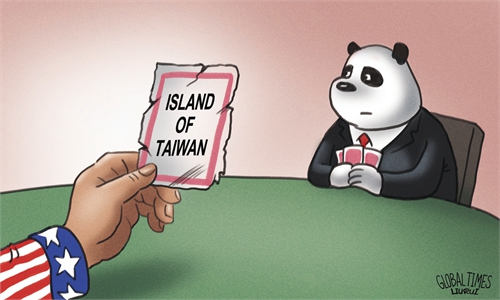All Chinese are in the position to question Taipei Palace Museum: Global Times editorial

The porcelain work "jadeite cabbage" Photo: Xinhua
The news that three pieces of precious cultural relics were shattered in Taipei Palace Museum cannot be concealed anymore and has caused public outrage across the Taiwan Straits. People on both sides of the Straits and all the sons and daughters of the Chinese nation at home and abroad have not only greatly deplored the damage of the cultural relics, but also have doubts over the attitude, ability and motivation of the incumbent management of the Taipei Palace Museum regarding the protection of nearly 700,000 cultural relics housed there.
The latest incident could be traced back to May of this year, but wasn't revealed until just a few days ago. The Taipei Palace Museum made a hasty and implausible explanation reluctantly. If the public hadn't exposed the incident, would it have been covered up by the Taipei Palace Museum forever? In places in the museum where the public has not paid attention to, are there more valuable artifacts that have been damaged but covered up?
Signs indicate that it's no accident that such incidents have happened one after another in recent years. The root cause is that the DPP authorities' promotion of "de-Sinicization" in the Taiwan island has seriously affected the protection and management of cultural relics in the island. This deserves our high vigilance and firm opposition.
It's known to all that the collections in the Taipei Palace Museum are extraordinary. They are cultural treasures belonging to the entire Chinese nation as well as testimony and inheritance of China's long history and splendid culture. They are of more special and richer historical, cultural and ethnic value as they went through China's war of resistance against Japanese aggression and the Chinese civil war and have become the cultural link and historical bonds that cannot be cut off between the Taiwan island and the Chinese mainland.
However, the current management staff of the Taipei Palace Museum have spent more efforts in downplaying and avoiding these aspects than they have invested in the protection and management of the precious cultural relics. This has led to the repeated damage of the precious cultural relics. The batch of national treasures survived the gunfire of Japanese aggressors. They traveled thousands of miles but none was lost or damaged with the escort's protection. Why have they been damaged today? They have been in the Taiwan island for more than 70 years, and received no damages after three times of inventory inspection. How come the damage today? Although Wu Mi-cha, curator of the Taipei Palace Museum, made up various excuses, the outside world has enough reason to doubt that the root cause for the damage to the national treasures is the DPP authorities' "de-Sinicization" actions that go against the trend.
The DPP authorities chose Wu to be the director of the Taipei Palace Museum not because of his professionalism or sense of responsibility, but because of his "pro-independence" color. Wu of course understood this. After having taken office, he greatly engaged in "de-Sinicization" in cooperation with the DPP authorities. In all those political manipulations, the valuable cultural relics of the Taipei Palace Museum have been taken as political resources, and the manipulations have consumed and undermined the professional ability and awe in the protection and management of cultural relics.
The 1.4 billion people in the Chinese mainland as well as other Chinese around the world are in the position to demand an explanation and assurances from the Taipei Palace Museum and the DPP authorities. If they are unable to protect the priceless cultural relics, they should hand over the work to more professional, capable and responsible people. Previously, it was reported that the DPP authorities wanted to transfer 90,000 of the most priceless relics to the US and Japan. Although the DPP authorities denied this, it is an indisputable fact that the Taipei Palace Museum, which was manipulated by them, has marginalized Chinese culture on purpose.
There were many cultural exchanges between museums from the two sides before the DPP authorities came to power. Directors of palace museums across the Straits carried out exchange visits and cultural exhibitions were jointly held. Visitors from the mainland frequently visit the Taipei Palace Museum. The highest record is that of visits of millions of mainland tourists a year. On June 11, 2011, under the joint promotion of insightful people from both sides of the Taiwan Straits, the "Remaining Mountain" and "the Master Wuyong Scroll," two part of the "Dwelling in the Fuchun Mountains" that had been separated for hundreds of years, were combined and exhibited in Taipei, becoming a very symbolic scene of cross-Straits cultural exchanges.
When the DPP authorities engaged in secessionist acts, precious cultural relics became sacrificial lambs. It used "jadeite cabbage," a rare piece in the Taipei Palace Museum collection, to campaign for DPP politicians. This time, three valuable cultural relics were damaged. There will be more serious consequences if this is allowed to go on. The only way to fundamentally get rid of the crisis of national treasures is to end the separation between the two sides of the Taiwan Straits.
Only under reunification can national treasures be better protected, and cultural relics can better play their role in passing on the bloodline of the Chinese civilization.

